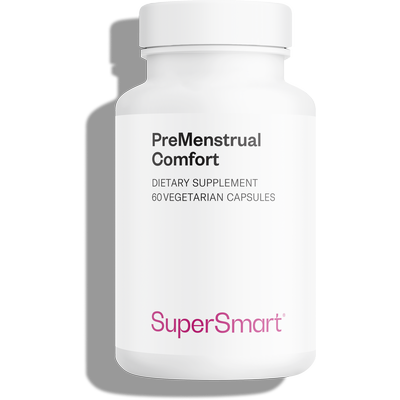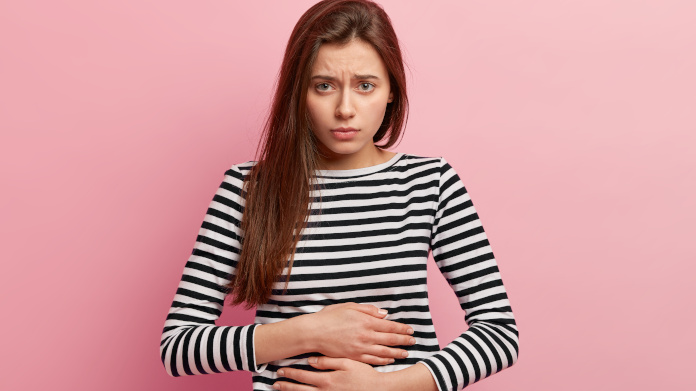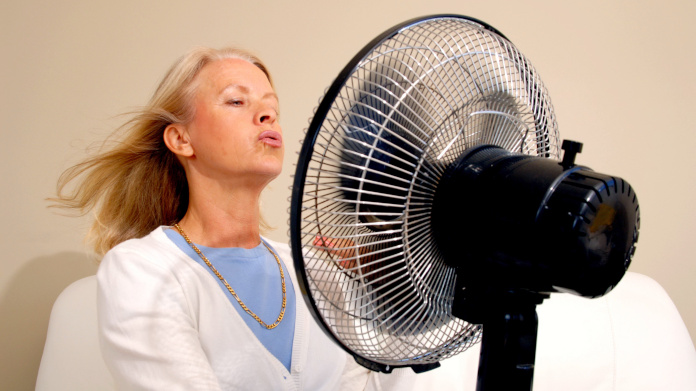What are the benefits of chasteberry?
Used since ancient times for medicinal purposes, chasteberry is still used in herbal medicine today, particularly in the field of women’s health. What proven benefits does it offer?

What is chasteberry?
Chasteberry (Vitex agnus-castus), also known as Abraham’s balm or monk’s pepper, is a Mediterranean plant from the Verbenaceae family. Reaching a height of up to 5 metres, this deciduous shrub bears palmate leaves and violet flower panicles which produce berries in autumn.
It has been highly-prized for its medicinal benefits (particularly for women’s health) since the time of the Ancient Greeks. In Homer’s Iliad, chasteberry symbolised “chastity that could ward off evil” (1). It’s no coincidence, then, that monks used to grow it in monastery gardens and chew its peppercorn-like berries to help them resist temptations of the flesh (hence its other name monk’s pepper).
Biochemically, chaste berries contain iridoids (agnuside), flavonoids (vitexin, casticin…), alkaloids, steroids, essential oils with cineole and labdane-type diterpenes (such as rotundifuran) (2).
What are chasteberry’s health benefits?
Recognised support for premenstrual problems
Chasteberry is thought to provide valuable premenstrual support (3). Several studies refer to its benefits in the management of premenstrual syndrome (PMS), which is characterised by physical and emotional symptoms that appear a few hours or days before the arrival of a period: tenderness in the breasts, back or lower abdomen, headaches, digestive problems, fatigue, irritability, low mood…
Indeed chasteberry’s traditional use is recognised by the European Medicines Agency, the German Commission E and ESCOP.
It seems the plant’s diterpenes react with the pituitary gland, the ‘master gland’ of the endocrine system located at the base of the brain, stimulating dopamine receptors.
In a cascade effect, they are believed to inhibit the release of prolactin following ovulation (which is responsible for premenstrual breast pain) and promote the production of progesterone by the ovaries (insufficient production of which during the luteal phase (second half of the cycle) is believed to maintain PMS) (4-5).
A hormone regulator
Chasteberry supports female hormonal balance and physiological well-being more broadly during the menstrual cycle.
Its ability to regularise hormonal secretions, primarily through its progesterone-like action, means it is often recommended in phytotherapy for irregular or absent periods, as well as for premenstrual outbreaks of acne (counterbalancing the effects of oestrogen and testosterone which increase sebum production) (6-7).
It’s also notable that chasteberry is currently being studied in the context of male and female infertility (8).
A helping hand for menopausal women
Chasteberry also helps to relieve symptoms of the menopause. A double-blind clinical trial showed that compared with a placebo group, menopausal women supplemented with Vitex agnus-castus extract had less anxiety and vasomotor dysfunction (hot flushes) (9).
A shield against oxidative processes
Last but not least, chasteberry also helps to maintain joint mobility and flexibility, protect cells and tissues against oxidative damage and improve the body’s physiological resistance. An analysis of decoctions of Vitex-agnus castus dried berries showed it to have a high concentration of polyphenols and flavonoids as well as significant iron-chelating power (10).
Are there any risks associated with taking chasteberry?
The few side-effects reported are rare and disappear when supplementation ceases. They mainly consist of headaches, nausea, gastrointestinal problems, itching and rashes. However, it is still advisable to consult your doctor before starting to supplement with chasteberry, given its hormone interactions.
This plant is not recommended for children, women who are pregnant, breastfeeding or have a family or personal history of breast cancer, or anyone with a pituitary condition. It may also interfere with certain types of hormone therapy or treatments prescribed for Parkinson’s disease (11).
How and when should chasteberry be taken?
For premenstrual syndrome, the usual advice is to supplement in the second half of the cycle, ideally during the week before a period. However, supplementation needs to be continued for several consecutive cycles (between 3 and 6 on average) to see significant results.
While chasteberry supplements offer proven efficacy, be aware too that there are synergistic combinations which maximise the plant’s effects against premenstrual discomfort. For example, chasteberry is available in combination with:
- calcium, which supports normal neurotransmission and therefore the release of serotonin, which plays a major role in regulating mood (12-13);
- magnesium, which helps reduce fatigue and supports normal psychological function (better control of agitation and mood swings) (14);
- vitamin B6 which is involved in regulating hormone activity, especially steroid hormones (oestrogen, progesterone, testosterone …) (15).
For optimal efficacy, be sure to check the individual bioavailability of a supplement’s ingredients and their content of active principles (the all-in-one formulation PreMenstrual Comfort combines a chasteberry extract standardised to 0.5% vitexin, with vitamin B6, as well as calcium citrate and magnesium bisglycinate, two forms that offer high absorption and excellent digestive tolerance) (16-17).
SUPERSMART ADVICE
References
- Webster DE, He Y, Chen SN, Pauli GF, Farnsworth NR, Wang ZJ. Opioidergic mechanisms underlying the actions of Vitex agnus-castus L. Biochem Pharmacol. 2011 Jan 1;81(1):170-7. doi: 10.1016/j.bcp.2010.09.013. Epub 2010 Sep 18. PMID: 20854795; PMCID: PMC2993511.
- Boujbiha MA, Chahdoura H, Adouni K, Ziani BEC, Snoussi M, Chakroun Y, Ciudad-Mulero M, Fernández-Ruiz V, Achour L, Selmi B, Morales P, Flamini G, Mosbah H. Wild Vitex agnus-castus L.: Phytochemical Characterization, Acute Toxicity, and Bioactive Properties. Molecules. 2023 Jun 29;28(13):5096. doi: 10.3390/molecules28135096. PMID: 37446759; PMCID: PMC10343858.
- Zamani M, Neghab N, Torabian S. Therapeutic effect of Vitex agnus castus in patients with premenstrual syndrome. Acta Med Iran. 2012;50(2):101-6. PMID: 22359078.
- Puglia LT, Lowry J, Tamagno G. Vitex agnus castus effects on hyperprolactinaemia. Front Endocrinol (Lausanne). 2023 Nov 21;14:1269781. doi: 10.3389/fendo.2023.1269781. PMID: 38075075; PMCID: PMC10702745.
- Soleymanzadeh F, Mahmoodi M, Shahidi S. Effect of Vitex Agnus-Castus Ethanolic Extract on Sex Hormones in Streptozotocin-Induced Diabetic Rats. J Family Reprod Health. 2020 Jun;14(2):102-105. doi: 10.18502/jfrh.v14i2.4352. PMID: 33603801; PMCID: PMC7865197.
- Höller M, Steindl H, Abramov-Sommariva D, Kleemann J, Loleit A, Abels C, Stute P. Use of Vitex agnus-castus in patients with menstrual cycle disorders: a single-center retrospective longitudinal cohort study. Arch Gynecol Obstet. 2024 Feb 23. doi: 10.1007/s00404-023-07363-4. Epub ahead of print. PMID: 38393671.
- Nasri H, Bahmani M, Shahinfard N, Moradi Nafchi A, Saberianpour S, Rafieian Kopaei M. Medicinal Plants for the Treatment of Acne Vulgaris: A Review of Recent Evidences. Jundishapur J Microbiol. 2015 Nov 21;8(11):e25580. doi: 10.5812/jjm.25580. PMID: 26862380; PMCID: PMC4740760.
- Rafieian-Kopaei M, Movahedi M. Systematic Review of Premenstrual, Postmenstrual and Infertility Disorders of Vitex Agnus Castus. Electron Physician. 2017 Jan 25;9(1):3685-3689. doi: 10.19082/3685. PMID: 28243425; PMCID: PMC5308513.
- Naseri R, Farnia V, Yazdchi K, Alikhani M, Basanj B, Salemi S. Comparison of Vitex agnus-castus Extracts with Placebo in Reducing Menopausal Symptoms: A Randomized Double-Blind Study. Korean J Fam Med. 2019 Nov;40(6):362-367. doi: 10.4082/kjfm.18.0067. Epub 2019 May 9. PMID: 31067851; PMCID: PMC6887765.
- Boujbiha MA, Chahdoura H, Adouni K, Ziani BEC, Snoussi M, Chakroun Y, Ciudad-Mulero M, Fernández-Ruiz V, Achour L, Selmi B, Morales P, Flamini G, Mosbah H. Wild Vitex agnus-castus L.: Phytochemical Characterization, Acute Toxicity, and Bioactive Properties. Molecules. 2023 Jun 29;28(13):5096. doi: 10.3390/molecules28135096. PMID: 37446759; PMCID: PMC10343858.
- Puglia LT, Lowry J, Tamagno G. Vitex agnus castus effects on hyperprolactinaemia. Front Endocrinol (Lausanne). 2023 Nov 21;14:1269781. doi: 10.3389/fendo.2023.1269781. PMID: 38075075; PMCID: PMC10702745.
- Südhof TC. Calcium control of neurotransmitter release. Cold Spring Harb Perspect Biol. 2012 Jan 1;4(1):a011353. doi: 10.1101/cshperspect.a011353. PMID: 22068972; PMCID: PMC3249630.
- Abdi F, Ozgoli G, Rahnemaie FS. A systematic review of the role of vitamin D and calcium in premenstrual syndrome. Obstet Gynecol Sci. 2019 Mar;62(2):73-86. doi: 10.5468/ogs.2019.62.2.73. Epub 2019 Feb 25. Erratum in: Obstet Gynecol Sci. 2020 Mar;63(2):213. PMID: 30918875; PMCID: PMC6422848.
- Facchinetti F, Borella P, Sances G, Fioroni L, Nappi RE, Genazzani AR. Oral magnesium successfully relieves premenstrual mood changes. Obstet Gynecol. 1991 Aug;78(2):177-81. PMID: 2067759.
- Wyatt KM, Dimmock PW, Jones PW, Shaughn O'Brien PM. Efficacy of vitamin B-6 in the treatment of premenstrual syndrome: systematic review. 1999 May 22;318(7195):1375-81. doi: 10.1136/bmj.318.7195.1375. PMID: 10334745; PMCID: PMC27878.
- Nicar MJ, Pak CY. Calcium bioavailability from calcium carbonate and calcium citrate. J Clin Endocrinol Metab. 1985 Aug;61(2):391-3. doi: 10.1210/jcem-61-2-391. PMID: 4008614.
- Uberti F, Morsanuto V, Ruga S, Galla R, Farghali M, Notte F, Bozzo C, Magnani C, Nardone A, Molinari C. Study of Magnesium Formulations on Intestinal Cells to Influence Myometrium Cell Relaxation. Nutrients. 2020 Feb 22;12(2):573. doi: 10.3390/nu12020573. PMID: 32098378; PMCID: PMC7071389.
Keywords
56 Days
Very happy with the order and the…
Very happy with the order and the prompt team's response to an identified issue with my order.
KUQI Fatmir
63 Days
15 + years as a customer
I have been using their products for over 15 years as I find both the quality and pricing excellent.
Del Chandler
65 Days
Good quick delivery
Good quick delivery
Timothy O Shea
66 Days
Good service
Good communication following order. Product came within the time frame and was well packaged. The only confusing thing I found was in checking out. For some reason it is not clear how to do so and the current system should be improved.
Joe O Leary
75 Days
Simple and fast.
Simple and fast.
Nina
75 Days
Great product was definitely what is…
Great product was definitely what is says and arrived on without issue
customer
81 Days
I love reading those product facts on…
I love reading those product facts on Supersmart.com. Effective health products making permanent changes to my blood-work results and testes. However, I also have to order capsules from other websites.
NORDGULEN Olav
84 Days
Great products
Great products Very easy to choose, to order… and to get at home
Federica mastrojanni
87 Days
Service rapide et bons produits
Service rapide et bons produits
customer
88 Days
Good products and fast delivery
Good products and fast delivery
Trusted
93 Days
Does what it says on the can
I believe in this product Made to highest standard The ordering process is straightforward Delivery time prompt Excellent product, excellent service Happy customer ❤️
Sheba Kelleher
98 Days
Excellents produits
Excellents produits. Rien à dire si ce n'est qu'ils sont très chèrs.
MJS_France
100 Days
Very good supplement
Very good supplement
Glaveash
101 Days
Supersmart supplements are really…effective
Supersmart supplements are really effective and have helped me and family members and friends to improve their health including some of us with severe health problems including some with no existing medical treatment.
Anne Georget
102 Days
SuperBig Supersmart
SuperBig Supersmart
Pierre




